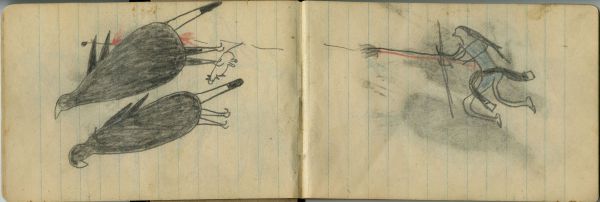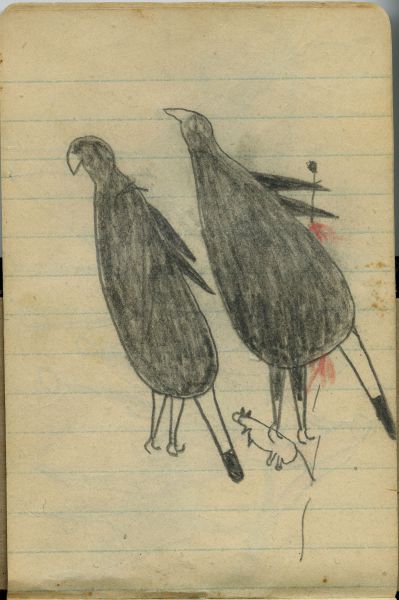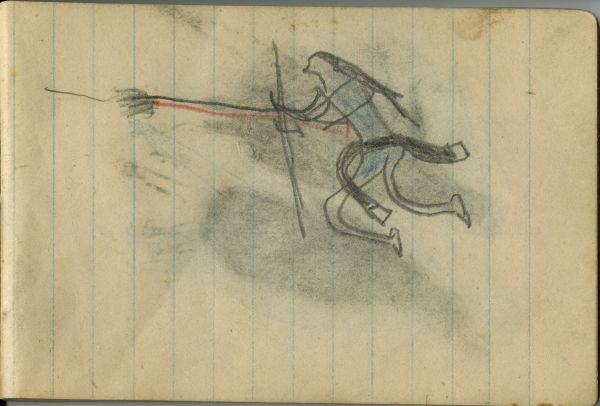HUNTING: Man on Foot Shooting Two Golden Eagles with Rifle
Ethnographic Notes
Horizontal and Vertical HUNTING SCENE: Man on Foot Shooting Two Golden Eagles with Rifle. The diptych shows a hunter on the right-hand page (horizontal, with motion flowing from right to left) props his hunting rifle on a brace. A bullet’s path is traced from the gun’s muzzle through the right-hand eagle’s body. The eagles are oriented vertically to the page. Red coloring indicates this is a fatal killing. The man wears loose hair, and he has no ornaments. No facial features or facepaint are visible. His shirt is blue, probably cloth, and it reaches below his belt. He wears a dark (lead pencil) breechclout with undyed selvedges and no leggings or trousers. His moccasins are minimally represented. The man’s legs are bent as he kneels to the height of the rifle. The gun lies braced within the cross of two sticks. It has a dark (lead pencil) line for the upper part of the rifle and shooting mechanism. The lower line of the stock and butt are red. A cluster of short lines at the end of the barrel indicate the explosion of a shot, and four lines trace the bullet’s path to the wound in the bird. Another line leads out the far side of the bird’s body, ending with a small dot, the bullet itself. The two birds have tailfeathers that are white with black tips—immature (first year) golden eagle feathers (see Benson Lanford, 2003: 153, fig. 8). The dying bird has a mouse or other small varmint in its talons. The small mammal has outlined body and details of ears, four legs, and long tail. The eagle has the sharp beak of a predator, dark and plump body, and wings. The companion bird is identical except it is slightly smaller, the beak is more curved, and it has uncolored legs. It has no prey in its talons. It is smaller, probably the male since male golden eagles are smaller than females. The birds resemble the Golden Eagles of the Wild Hog-Kansas State Historical Society ledger (plates 15, 34, 36). They also resemble the “striped eagle” in Making Medicine's 1875 "Fowls of Indian Territory" drawing (National Anthropological Archives, Smithsonian, Washington D.C., Neg. No. 55,036, dated 1875). John H. Moore describes “war eagle,” “striped eagle,” “ordinary eagle,” “yellow eagle,” “snow head,” “prairie” or “spotted eagle,” “red eagle,” “blue eagle,” “gray eagle,” and “white-painted eagle” in translations of Cheyenne taxonomy of “great birds” in “The Ornithology of Cheyenne Religionists” (Plains Anthropologist 1986: 183).


